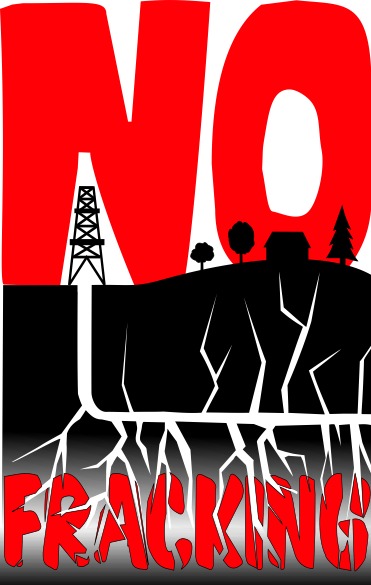Fracking Is Not Safe

Tags: USA
Fracking Is Not Safe published by Evanvinh
Writer Rating: 5.0000
Posted on 2016-03-19
Writer Description: Evanvinh
This writer has written 733 articles.
"60 percent of oil and gas wells failed within 28 years."
Anthony Ingraffea is the Dwight C. Baum professor of engineering at Cornell University. In the following viewpoint, he contends that despite claims to the contrary by those in the gas and oil industry, problems that arise during the fracking process can release toxins into the air and water. Most of the problems that occur can be traced to the difficulty of getting the cement job right, he explains. Ingraffea suggests that to preserve water and air quality and reduce carbon emissions, America should turn to renewable wind, water, and solar energy technologies, not fracking.
Cement Failures Are Common
Fracking is an extreme form of fossil fuel development because of the large number of big wells that have to be drilled to develop these deep oil and gas resources. Unconventional oil and gas drilling requires directional drilling, high frack fluid volume, slickwater (fracking fluid water that has been laced with a lubricant because contrary to what you'd think, water isn't slippery or viscous enough to do the job), multi-well pads and cluster drilling. These technologies put drinking water at risk for contamination with biocides, heavy metals, salts, radioactive materials, endocrine disruptors and oils.
While operators repeatedly claim that their technology is safe, those of us who understand the industry can tell you that problems frequently occur. It is often said within the industry that the three biggest problems are cement, cement, and cement. It is difficult to do a perfect cement job. The BP oil well failure in the Gulf of Mexico [in 2010] was a result of a shoddy cementing job. The cement has to bond to a grease-coated steel pipe on one side and with the rocks, minerals, and mud on the other side. The problem is if the outside layer of cement fails, the inside layer doesn't matter. According to a review of industry's own data, 60 percent of oil and gas wells failed within 28 years. These failures can lead to the contamination of the aquifers we need to keep clean for drinking water.
Multiple industry studies show that about 5 percent of all oil and gas wells leak immediately because of integrity issues, with increasing rates of leakage over time. With hundreds of thousands of new wells expected, this problem is neither negligible nor preventable with current technology.
Pressures under the earth, temperature changes, ground movement from the drilling of nearby wells, and shrinkage crack and damage the thin layer of brittle cement that is supposed to seal the wells. And remember, getting the cement perfect as the drilling goes horizontally into shale or other tight formations is extremely challenging. Once the cement is damaged, repairing it thousands of feet underground is expensive and often unsuccessful. The oil and gas industry has been trying to solve this problem for decades.
Fracking Risks Contaminating Air and Water
The scientific community has been waiting for better data from the EPA [Environmental Protection Agency] to assess the extent of the water contamination problem. That is why it is so discouraging that, in the face of industry complaints, the EPA reportedly has closed or backed away from several investigations into the problem. Perhaps a full EPA study of hydraulic fracturing and drinking water, due in 2014, will be more forthcoming. In addition, drafts of an Energy Department study suggest that there are huge problems finding enough water for fracturing future wells. Water quantity impacts may be even more severe than water quality impacts.
And risks aren't just to water resources. Another problem is that methane routinely leaks from these unconventional wells. Though there is significant uncertainty over the rate, recent measurements by the National Oceanic and Atmospheric Administration at gas and oil fields in California, Colorado and Utah found leakage rates of 2.3 percent to 17 percent of annual production, in the range my colleagues at Cornell [University] and I predicted some years ago. This is the gas that is released into the atmosphere unburned as part of the hydraulic fracturing process, and also from pipelines, compressors and processing units. Those findings raise questions about what is happening elsewhere. The Environmental Protection Agency has issued new rules to reduce these emissions, but the rules don't take effect until 2015, and apply only to new gas wells.
We have renewable wind, water, solar and energy-efficiency technology options now. We can scale these quickly and affordably, creating economic growth, jobs and a truly clean energy future. Political will is the missing ingredient. Protection of our water and air, as well as meaningful carbon reduction, is impossible so long as the fossil fuel industry is allowed so much influence over our energy policies and regulatory agencies. Policy makers need to listen to the voices of independent scientists while there is still time.
Sources: http://ic.galegroup.com.db24.linccweb.org/ic/ovic/ViewpointsDetailsPage/ViewpointsDetailsWindow?failOverType=&query=&prodId=OVIC&windowstate=normal&contentModules=&display-query=&a
You have the right to stay anonymous in your comments, share at your own discretion.


